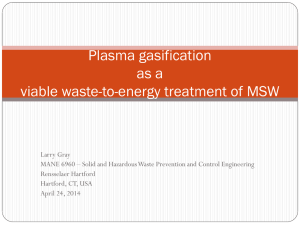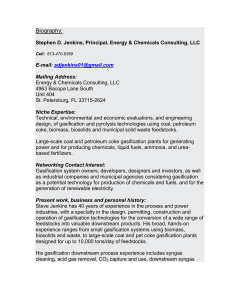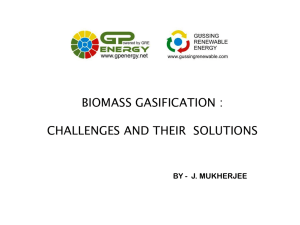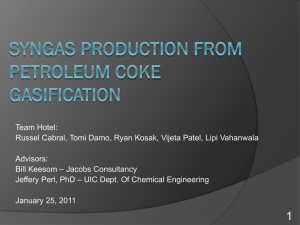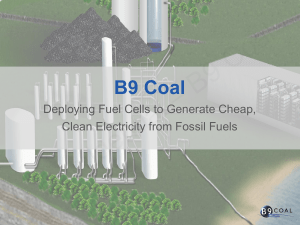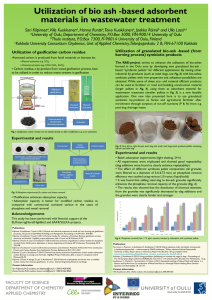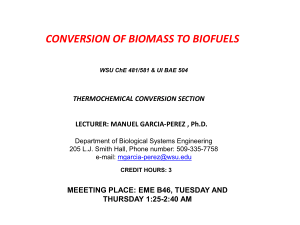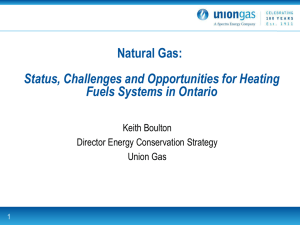Gasification is more monetarily efficient than incineration
advertisement
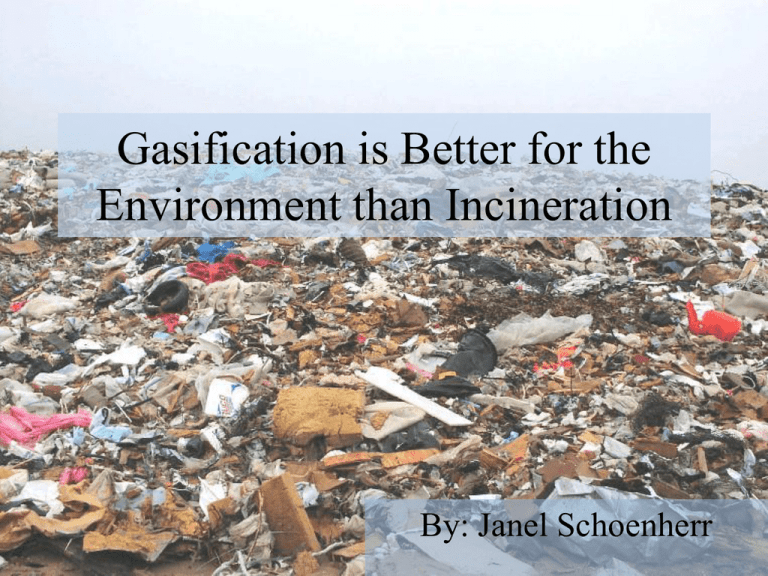
Gasification is Better for the Environment than Incineration By: Janel Schoenherr Waste Management • There mission is to “maximize resource value, while minimizing environmental impact so that both our economy and our environment can thrive.” • They serve over 20 million residential, industrial, municipal and commercial customers and in 2010 made a revenue of about $12.52 billion. • Solid waste management must meet all six strategies of the hierarchy in the major waste management operations of generation, collection, processing, transportation and disposal. The goal is to move solid waste management up the hierarchy, away from landfilling and towards source reduction, set by the Environmental Protection Agency Waste Management • The U.S Environmental Protection Agency reported in 2009 that “Americans produced about 243 million tons of municipal solid waste” (MSW). • This is equivalent to about 4.3 pound of waste per person per day, 30.1 pounds a week, 129 pounds a month, and 1548 pounds a year. Waste to Energy • “Waste-to-energy (WtE) is the process of creating energy in the form of electricity or heat from the incineration of waste source. WtE is a form of energy recovery. Most WtE processes produce electricity directly through combustion, or produce a combustible fuel commodity, such as methane, methanol, ethanol or synthetic fuels.” Incineration • Means render to ash • Incineration uses MSW as a fuel, burning it with high volumes of air to form carbon dioxide and heat. In a waste-to-energy plant that uses incineration, these hot gases are used to make steam, which is then used to generate electricity. • Has been outlawed in most countries. • Because older incinerations are not designed to capture toxic emissions and are extremely bad for the environment. Gasification History • Gasification has been around since the 1800s. • In the 1940s gasification was used to produce “town-gas” for lighting and heating. • Gasification has been a dependable source in the chemical, refining, and fertilizing industries for more than 50 years on a commercial scale worldwide and has been used by the electric power industry for more than 35 years. Gasification • Gasification does not involve burning the waste, instead it uses intense pressure combined with oxygen or air to convert carbonbased materials directly into gas. The process breaks the waste down to its molecular level, so pollutants can be relatively easily and inexpensively removed. • This makes it better for the environment and more economically beneficial than incineration. • Gasification recovers energy locked in biomass and municipal solid waste and converts those materials into valuable products eliminating the need for incineration and landfills • “In order to maximize the potential of gasification in the United States, the government needs to create a financial and regulatory environment that will encourage investments in the technology used to stabilize the “cost” of carbon.” • Gasification is an investment in our energy future. Gasification Video • http://www.youtube.com/watch?v=bPRa31dS 0vA Gasification vs. Incineration • Gasification is not incineration. • Incineration is the burning of fuels in an oxygen-rich environment, where the waste material combusts and produces heat and carbon dioxide, along with a variety of other pollutants. • Gasification is the conversion of wastes into their simplest molecules. • The process works by having carbon monoxide, hydrogen and methane form a syngas which then can be used for generating electricity or producing valuable products that can be cleaned of pollutants before being used, unlike incineration. • The oxygen-deficient atmosphere in a gasifier does not provide the surroundings needed for dioxins and furans to form or reform. • When the syngas is primarily used as a fuel for making heat, it can be cleaned as necessary before combustion which cannot occur in incineration. Technology • Gasification can capture carbon dioxide much more efficiently and at a lower cost. • This capture technology is being successfully used at gasification plants in the U.S. and worldwide. World gasification capacity is projected to grow by more than 70% by 2015. Most of that growth will occur in Asia, with China expected to achieve the most rapid growth • Gasification produces electricity with significantly reduced environmental impact compared to traditional technologies. Gasification in the United States •China is expected to achieve the most rapid growth in gasification worldwide. Since 2004, 35 new gasification plants have been licensed and/or built in China. In contrast, no new gasification plants have begun operation in the United States since 2002. •The gasification industry is expected to grow significantly in the United States despite a number of challenges, including rising construction costs and uncertainty about policy incentives and regulations. The Environmental Benefits • It unlocks the greatest amount of energy from waste • Feedstocks can be mixed, such as municipal solid waste, biomass, tires, hazardous waste, and auto shredder waste • It does not generate methane, a potent greenhouse gas • It is not incineration and therefore doesn’t produce leachable bottom ash or fly ash • It reduces the need for landfilling of waste • It produces syngas, which can be combusted in a gas turbine or reciprocating to produce electricity or further processed into chemicals, fertilizers, or transportation fuels—thereby reducing the need for virgin materials to produce these products • It has low environmental emissions Plasma Gasification • Plasma technologies have been used for over 30 years in a variety of industries, including the chemical and metals industries. • The primary use of plasma gasification has been to decompose and destroy hazardous wastes, as well as to melt ash from mass-burn incinerators into a safe, non-leachable slag. • Use of the technology as part of the waste-to-energy industry is much newer and still not used in the United States. • There are currently plasma gasification plants operating in Japan, Canada and India. For example, a facility in Utashinai, Japan has been in commercial operation since 2001, gasifying municipal solid waste and auto shredder waste to produce electricity. There are a number of proposed plasma gasification plants in the United States. Plasma Gasification • http://www.youtube.com/watch?v=n6xyRx_9 8Rc&feature=related What You Can Do • • • • Reduce, Reuse, and Recycle Don’t waste Conserve energy Become more environmentally friendly in every aspect of your life Works Cited • http://www.arlingtonva.us/departments/environmentalservices/sw d/EnvironmentalServicesSwdWasteManagement.aspx • http://www.wm.com/about/index.jsp • “Wastes-Non-Hazardous Waste-Municipal Solid Waste.” U.S. Environmental Protection Agency. 27, July 2011. Web. 18, Oct 2011 <http://www.epa.gov/osw/nonhaz/municipal/ • “Gasification vs. Incineration.” Gasification Facts. Gasification Technology Council, n.d. Web. 18, Oct 2011 <http://www.gasification.org/page_1.asp?a=86&b=85 • U.S. Environmental Protection Agency. Priority PBTs : Dioxins and Furans Fact • Sheet. Web. 18, Oct 2011. Washington, D.C.: Office of Pollution Prevention and Toxic from http://www.epa.gov/osw/hazard/wastemin/minimize/factshts/diox fura.pdf

